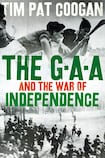
On All-Ireland hurling final day in 1966 the Gaelic Athletic Association hosted a group of elderly veterans of the 1916 Rising at Croke Park. In a message of welcome, the match programme claimed that the veterans’ presence symbolised “the indivisibility which has always existed between this Association and the aspiration of a free and Gaelic Ireland”. This was the standard story. It was, and to some extent is, the GAA’s own version of its story.
There have always been those, on the other hand, who have kicked against that received truth. Eleven years earlier, Seán Clifford, who had been an officer in the IRA in Limerick during the War of Independence, offered a different view to the Bureau of Military History. “Men who spoke only English and who never had much time for Gaelic games met, attacked and beat the enemy,” he said, “whereas those who claimed a monopoly of Irish patriotism, namely members of the Gaelic Athletic Association and the Gaelic League, were nowhere to be seen when it came to a fight with the enemy.” A contrarian, Clifford over-stated his case. It is clear, nonetheless, that if the GAA was committed to the aspiration of a free and Gaelic Ireland, then it was always distinguishable from – in some places more than others and at some times more than others – physical force nationalism.
On the morning of Bloody Sunday, November 21st, 1920, the Dublin Brigade of the IRA killed Capt Geoffrey Thomas Baggallay at 119 Baggot Street. Baggallay, who was one of 15 to die due to the morning’s violence, was a junior courts-martial officer. That weekend he was working at the court-martial of Michael O’Rourke, who was accused of murdering a British soldier named William Rodgers during an ambush at Bruree, Co Limerick in July. Despite the evidence gathered by Baggallay, O’Rourke was acquitted. One of his defence witnesses was Maj Laurence Roche, also from Bruree. Roche had fought in France with the Royal Munster Fusiliers and had been, at various times, chairman of the Limerick County Board of the GAA and vice-president of the association nationally.
That Sunday afternoon, when a combined force of military and police descended upon Croke Park and the police opened fire they would kill 14 people. The best known victim is Michael Hogan, a Tipperary footballer, Irish Volunteer, and brother of Dan Hogan, a senior figure in the IRA in Ulster. The match between Tipperary and Dublin, which was so violently interrupted, was in aid of the Irish Republican Prisoners’ Dependents Fund. The decision to proceed, despite concerns that the game might be targeted following the morning’s events, was taken by a group of GAA officials, some of whom were also active republicans. But the GAA had other faces. As Frank “Scout” Butler, the Tipperary goalkeeper, used to tell it, being able to show the raiders the tattoo he had acquired in the British army protected him that day. Michael Feery, a spectator, local man and an unemployed former soldier, was not so fortunate. He was wearing his army undershirt and boots when he died, having decided to watch a Gaelic football match.
The kind of GAA a historian might find in the Ireland of November 1920 could be the GAA promised in cliche. The evidence to support that story is there. A different historian might on examination, whether of a court-martial or an atrocity at a football match, find a GAA that was somewhat different. At first this other GAA, that Ireland, with its uncertainties and ironies, might seem surprising, even confounding, but on reflection it might not seem so strange at all. In Tim Pat Coogan's The GAA and the War of Independence there is little room for doubt. The book knows what it is for, and it knows who it is against. It asks few questions, and even fewer to which it doesn't already have an answer.
The GAA and the War of Independence is also, strictly speaking, not very much about the GAA and the War of Independence. Of the 275 pages (before appendices, 51 endnotes, and a select bibliography), 31 are about the War of Independence. Most of those are about Bloody Sunday alone. Instead, the book has two contentions, and of these it is certain. First, the GAA is, and was, a nationalist organisation and, second, it is "the most socially valuable organization in Ireland". The second contention is asserted and then more or less taken for granted, though Coogan's admiration for the volunteers who have made and sustained his local club of Cuala emerges clearly.
The first is pursued at length in a tone that is at times reminiscent of the GAA’s in 1966, even as Coogan displays an awareness that the association has never been a monolith. In a style that is anecdotal and conversational rather than rigorous, Coogan muses on the origins of the association in 1884, the role of the Irish Revolutionary Brotherhood in its development, the effects of the revolutionary period of 1912 to 1923, the Northern Troubles, and the GAA’s approach to naming stadia in order to tell a story of the GAA’s nationalism.
All of this is characterised by an approach to history which is perhaps most swiftly illustrated by two examples. The first is the following sentence: "The initial growth of GAA clubs in the United States, for example, was fuelled by mass emigration that accompanied the trauma of the Great Famine in Ireland and its poverty-stricken aftermath." The second is Coogan's claim to have established that Girvan Dempsey's try against England at Croke Park in 2007 "had been scored on the very spot where . . . Michael Hogan was shot dead". The reader's immediate response to these is likely a good indication as to whether he or she will get along with this book.
William Murphy lectures in DCU and his latest work, co-authored with Anne Dolan, is Michael Collins: the Man and the Revolution









